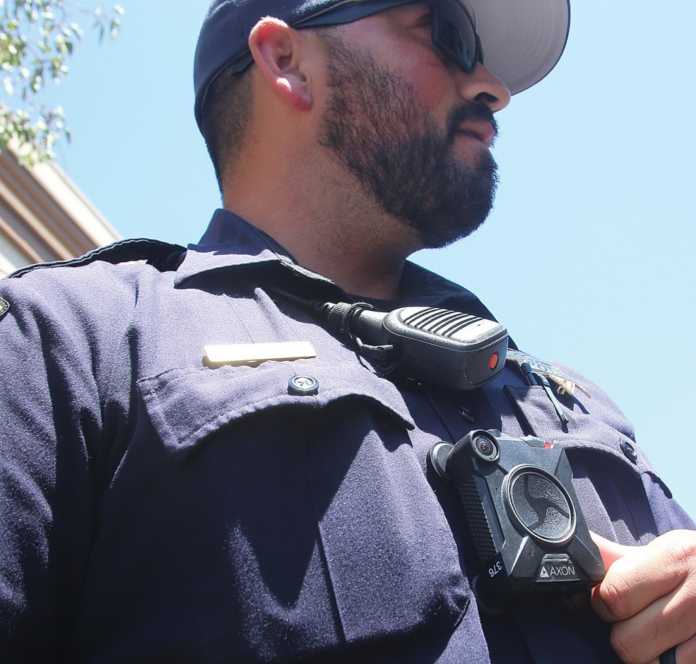WATSONVILLE — Nearly all Watsonville Police officers are now wearing body-worn cameras after the department fully rolled out the new program earlier this month.
During most contacts with the public, police officers activate the tiny cameras, which are affixed magnetically to the front of their uniforms. The video is then downloaded at the end of their shifts.
The use of body-worn cameras has become standard in law enforcement agencies across the U.S. as officials face increased public scrutiny in their dealings with the public.
Watsonville Police Capt. David Rodriguez, who runs the program, said the cameras are “a very good evidentiary tool” that will bolster the department’s relationship with the public.
“A lot of times we focus on the accountability and transparency part of it, but it also gathers very valuable evidence for our officers,” he said in a video on the department’s Facebook page.
“We’re very fortunate that the police department and the community already have a strong relationship,” he added. “Having this piece of equipment is only going to build on that relationship.”
WPD has used video cameras in its police cars for nearly two decades. The new cameras will allow officers to bring video surveillance directly into the field with them.
The purchase of the cameras, which occurred earlier this year, brings WPD up to speed with departments throughout the county and the country, which have long employed the devices, said WPD Sgt. Mish Radich.
The devices will provide a clear, unbiased view of police interactions, Radich said.
“It gives us the point of view from the officers’ perspective everywhere,” he said. “You get to see full-on what’s going on.”
The city spent about $472,000 for 75 cameras, most of which come from Measure G funds. A $20,000 federal grant covered the rest. This will include replacing all cameras in two years and again at five years, and unlimited data storage.
The cameras can be manually turned on, but they are also designed to automatically activate when officers draw their Taser.
Officers plug in their devices to charge at the end of their shift, which also downloads the video. That video can be easily accessed, but they cannot edit or delete the video, and the use of the videos is tracked.
“Officers don’t have the authority or even the ability to delete any footage,” Rodriguez said.
In a public statement, the ACLU of Northern California called the evidence from body-worn cameras “limited, but promising.”
The ACLU points to a study of body cameras in Rialto, which showed that officers who wore them used force half as often as those who did not, and were nearly 90 percent less likely to receive citizen complaints.
“Wherever body cameras are being considered, they need a strong policy to ensure that police body cameras are a tool for accountability, not abuse,” ACLU of Southern California staff attorney Catherine Wagner said.













